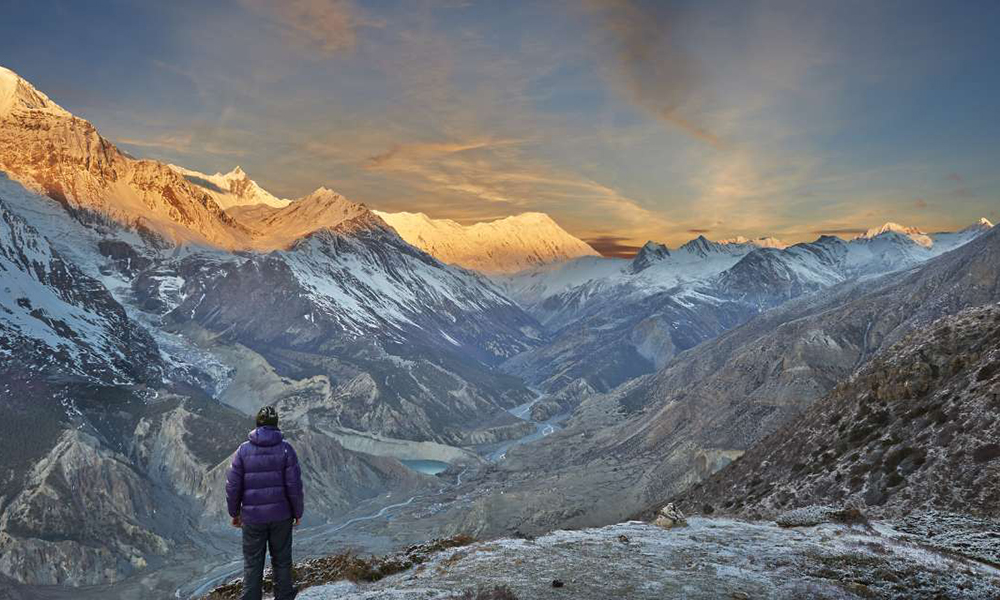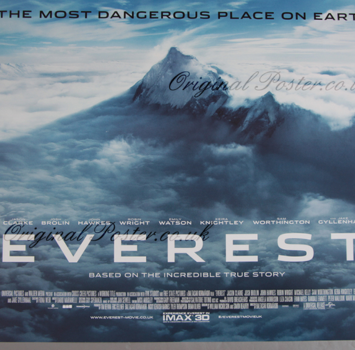

The Everest Region, also called the Khumbu Region, is one of the most stunning and iconic places on Earth. Located in northeastern Nepal, it is home to Mount Everest, the highest mountain in the world at 8,848 meters. But this area offers much more than just the famous peak. It is filled with breathtaking Himalayan views, deep-rooted Sherpa culture, ancient monasteries, and dramatic mountain trails.
For filmmakers looking for natural beauty and cultural richness, the Everest Region is a perfect location. Highlights include Everest Base Camp, the turquoise Gokyo Lakes, the lively mountain town of Namche Bazaar, and the sacred Tengboche Monastery. Other must-see spots are Kala Patthar for close-up Everest views, Lukla with its famous airport, the wild landscapes of Sagarmatha National Park, and trekking routes to Island Peak (Imja Tse), Ama Dablam Base Camp, and the challenging Three Passes Trek.
Filming Locations in the Everest Region (Khumbu Region)
The Everest Region in northeastern Nepal is one of the most visually striking and culturally rich filming destinations on Earth. Also known as the Khumbu Region, it offers an incredible mix of towering mountains, deep valleys, ancient monasteries, and vibrant Sherpa villages. Whether you're filming a documentary, commercial, feature film, or travel series, this region provides breathtaking backdrops and powerful stories.
Here are the top filming locations in the Everest Region:
- Everest Base Camp
Everest Base Camp is one of the most iconic filming spots in Nepal. Located at an altitude of 5,364 meters, it provides stunning close-up views of Mount Everest and the surrounding peaks like Lhotse and Nuptse. The glacier fields, rocky terrain, and fluttering prayer flags create a raw and emotional atmosphere that’s perfect for scenes focused on exploration, endurance, or spiritual journeys. - Gokyo Lakes
The Gokyo Lakes are a group of six high-altitude glacial lakes, known for their crystal-clear turquoise waters. Surrounded by snowy peaks and rocky ridges, this area offers a peaceful, otherworldly setting. Ideal for nature documentaries, romantic scenes, or stories with a mystical tone, the lakes are less crowded than the main Everest trail and provide a quiet escape into the heart of the Himalayas. - Namche Bazaar
Namche Bazaar is the largest and most vibrant Sherpa town in the region. Set in a natural amphitheater and surrounded by mountains, it serves as the main hub for trekkers and climbers. With colorful homes, traditional lodges, markets, bakeries, and panoramic views, Namche offers a rich cultural and visual setting perfect for capturing local lifestyle, commerce, and hospitality. - Tengboche Monastery
Perched on a ridge at 3,867 meters, Tengboche Monastery is the spiritual heart of the Everest Region. It offers sweeping views of Everest, Ama Dablam, and other surrounding peaks. The monastery hosts annual Buddhist festivals like Mani Rimdu, which are visually stunning and culturally significant. Monks in traditional robes, sacred rituals, and ancient chants provide rich content for cultural and spiritual storytelling. - Kala Patthar
Kala Patthar (5,545 meters) is the best viewpoint for close-up shots of Mount Everest. It’s especially popular for sunrise and sunset filming, when the mountains are bathed in golden light. The windswept ridge and wide Himalayan panoramas make it ideal for cinematic drone shots and dramatic scenes showcasing the scale and beauty of the mountains. - Lukla
Lukla is home to the famous Tenzing-Hillary Airport, known as one of the most thrilling airstrips in the world. Surrounded by steep hills and deep valleys, Lukla marks the entry point into the Everest Region. Its bustling air traffic, cozy tea houses, and mix of tourists and porters create a dynamic setting for opening scenes or travel sequences. - Sagarmatha National Park
This UNESCO World Heritage Site covers much of the Everest Region and is home to rich biodiversity, including Himalayan tahr, snow leopards, and red pandas. Lush rhododendron forests, winding rivers, suspension bridges, and alpine meadows offer varied shooting environments across seasons. It’s an ideal location for wildlife films, environmental documentaries, or scenes that need untouched natural beauty. - Island Peak (Imja Tse)
Island Peak or the Imja Tse is a popular trekking peak at 6,189 meters, offering a more technical mountain setting for filming. The journey to the base camp passes through icy valleys, stone-walled villages, and open glacial fields. It’s perfect for filming climbing scenes, expedition footage, or stories centered on adventure and survival. - Ama Dablam Base Camp
Ama Dablam is often called the "Matterhorn of the Himalayas" due to its beautiful pyramid shape. The base camp at around 4,600 meters offers stunning views of this elegant peak. Its dramatic presence in the background, coupled with quiet surroundings, makes it a great location for solo interviews, nature segments, or peaceful storytelling scenes. - Three Passes Trek
This route includes Kongma La (5,535m), Cho La (5,420m), and Renjo La (5,360m), three high mountain passes that connect remote valleys and villages. It’s one of the most adventurous treks in the region, offering sweeping views, hidden trails, frozen lakes, and fewer crowds. Filming here adds a raw, untouched quality to any project, perfect for epic narratives or extreme exploration films.
The Everest Region combines stunning natural beauty with rich culture, making it an ideal place for filming. From majestic mountains and clear lakes to ancient Sherpa villages and monasteries, it offers diverse and unforgettable scenes. With strong local support, filmmakers can create powerful stories in this remarkable landscape.
You may also prefer reading: Discover the Mustang Region
Why Choose the Everest Region for Filming?
The Everest Region is a visually and emotionally powerful storytelling canvas, offering filmmakers unique scenes of dramatic landscapes and authentic human experiences. With its breathtaking natural beauty, rich Himalayan culture, and spiritual atmosphere, the region provides stunning backdrops for any genre. From lush forests and glacial rivers to snow-covered peaks like Everest and Ama Dablam, the region offers a stunning backdrop for any genre. The Sherpa people, renowned for their warmth and resilience, bring cultural depth to the landscape with scenes of traditional village life, festivals, and ancient monasteries like Tengboche.
Filming here is also more accessible thanks to experienced local fixers, porters, and guides who are familiar with high-altitude conditions and logistics. Wilderness Film Productions, as a trusted local fixer and coordinator, provides expert support with permits, equipment transport, and on-the-ground assistance to ensure your production runs smoothly even in remote areas. If you’re filming a documentary, travel feature, or dramatic expedition, the Everest Region surely offers unmatched visuals, authenticity, and emotional impact on the screen.
In Summary
The Everest Region is an exceptional filming destination that combines breathtaking natural beauty with rich cultural heritage and spiritual depth. From towering peaks and serene lakes to vibrant Sherpa villages and ancient monasteries, it offers diverse and striking visuals for any production. With expert local support from Wilderness Film Productions, filmmakers can navigate the challenges of high-altitude filming smoothly. Whether capturing adventure, culture, or nature, the Everest Region guarantees unforgettable, authentic, and powerful storytelling on screen.




